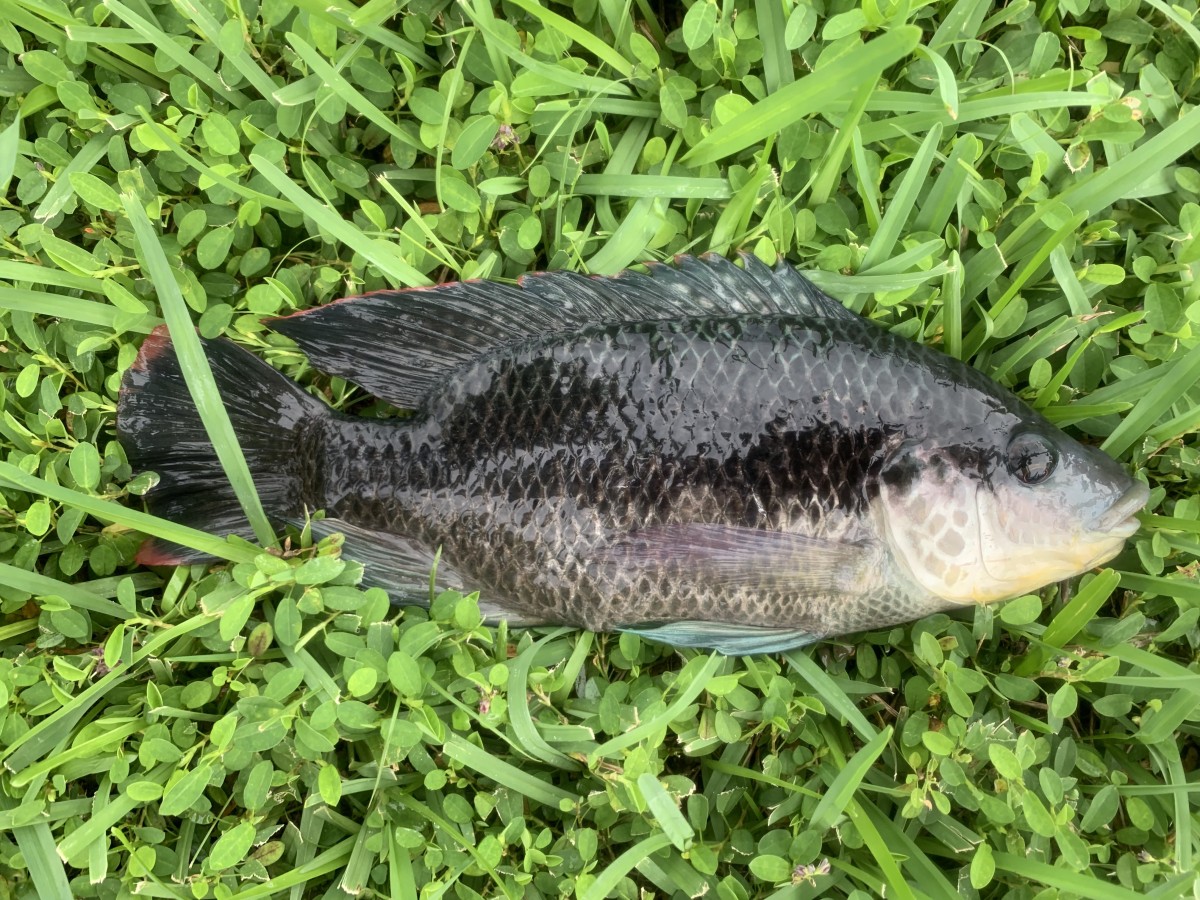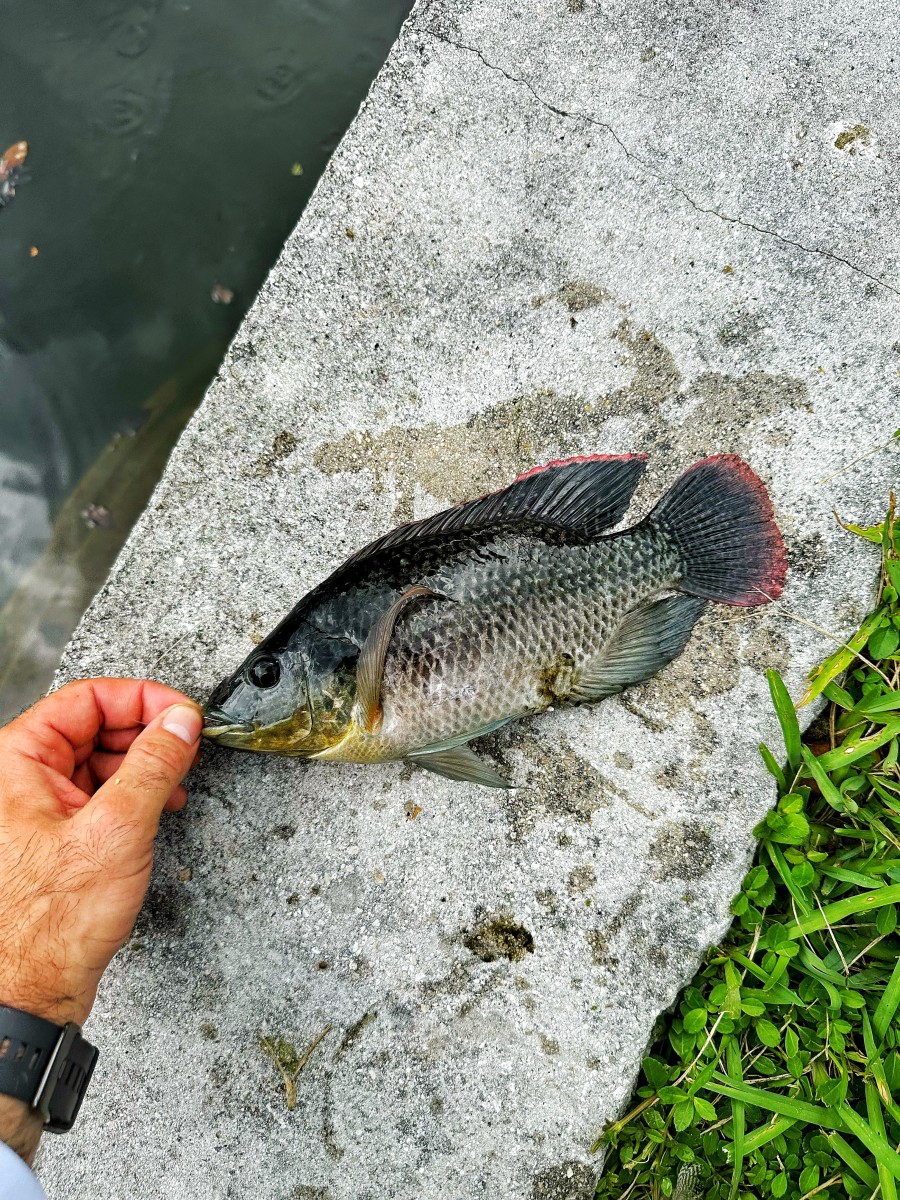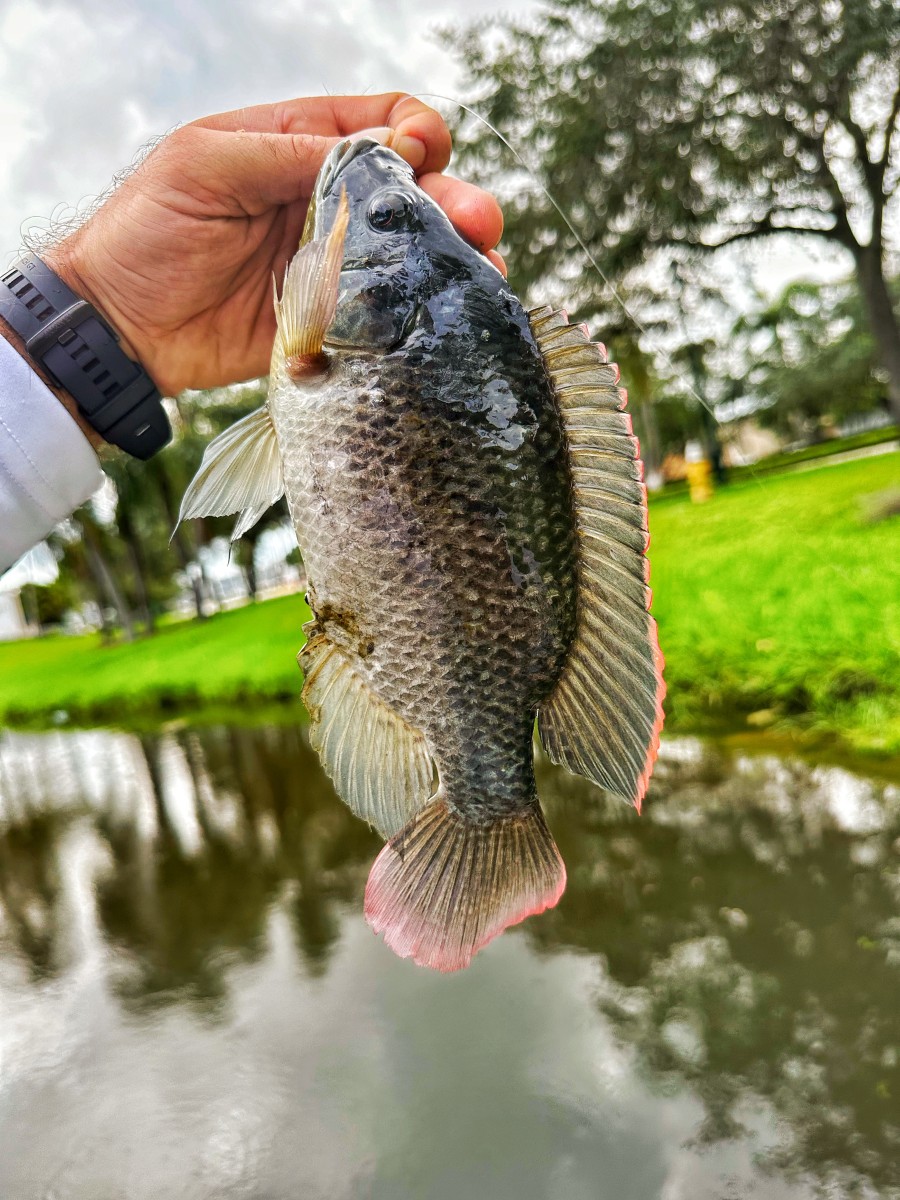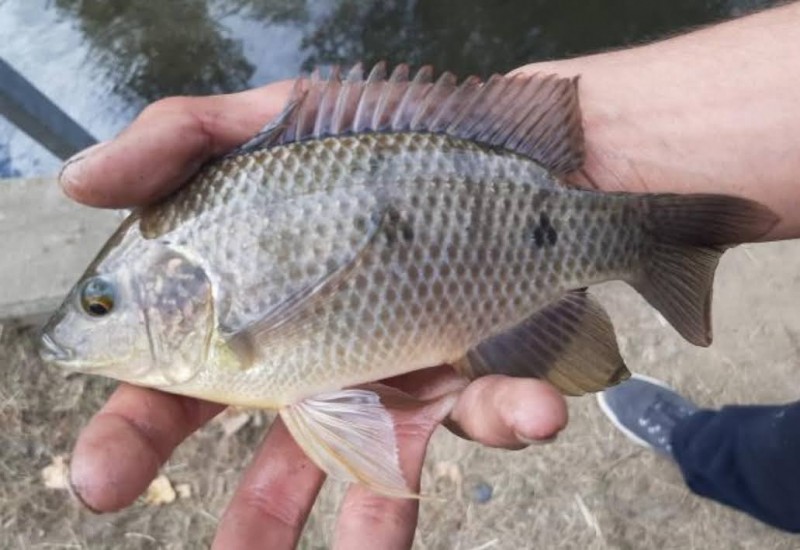Mozambique tilapia
(Oreochromis mossambicus)
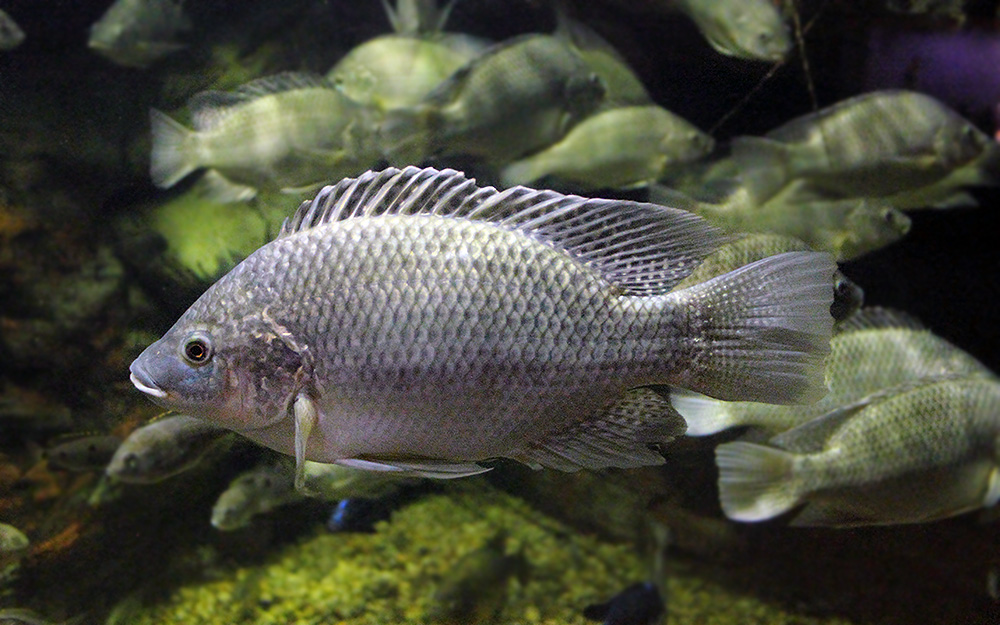
Classification
General data
The Mozambique tilapia (Oreochromis mossambicus) is an oreochromine cichlid fish native to southeastern Africa. Dull colored, the Mozambique tilapia often lives up to a decade in its native habitats. It is a popular fish for aquaculture.
Due to human introductions, it is now found in many tropical and subtropical habitats around the globe, where it can become an invasive species because of its robust nature. These same features make it a good species for aquaculture because it readily adapts to new situations. It is known as black tilapia in Colombia and as blue kurper in South Africa.
Description
The native Mozambique tilapia is laterally compressed, and has a deep body with long dorsal fins, the front part of which have spines. Native coloration is a dull greenish or yellowish, and weak banding may be seen.
Adults reach up to 39 cm (15 in) in standard length and up to 1.1 kg (2.4 lb). Size and coloration may vary in captive and naturalized populations due to environmental and breeding pressures. It lives up to 11 years.
Distribution and habitat
The Mozambique tilapia is native to inland and coastal waters in southeastern Africa, from the Zambezi basin in Mozambique, Malawi, Zambia and Zimbabwe to Bushman River in South Africa Eastern Cape province.
It is threatened in its home range by the introduced Nile tilapia. In addition to competing for the same resources, the two readily hybridize. This has already been documented from the Zambezi and Limpopo Rivers, and it is expected that pure Mozambique tilapia eventually will disappear from both.
Otherwise it is a remarkably robust and fecund fish, readily adapting to available food sources and breeding under suboptimal conditions. Among others, it occurs in rivers, streams, canals, ponds, lakes, swamps and estuaries, although it typically avoids fast-flowing waters, waters at high altitudes and the open sea. It inhabits waters that range from 17 to 35 °C (63–95 °F).
Invasiveness
The Mozambique tilapia or hybrids involving this species and other tilapia are invasive in many parts of the world outside their native range, having escaped from aquaculture or been deliberately introduced to control mosquitoes. The Mozambique tilapia has been nominated by the Invasive Species Specialist Group as one of the 100 worst invasive species in the world. It can harm native fish populations through competition for food and nesting space, as well as by directly consuming small fish. In Hawaii, striped mullet Mugil cephalus are threatened because of the introduction of this species. The population of hybrid Mozambique tilapia x Wami tilapia in Californias Salton Sea may also be responsible for the decline of the desert pupfish, Cyprinodon macularius.
Hybridization
As with most species of tilapia, Mozambique tilapia have a high potential for hybridization. They are often crossbred with other tilapia species in aquaculture because purebred Mozambique tilapia grow slowly and have a body shape poorly suited to cutting large fillets. However, Mozambique tilapia have the desirable trait of being especially tolerant of salty water. Also, hybrids between certain parent combinations (such as between Mozambique and Wami tilapia) result in offspring that are all or predominantly male. Male tilapia are preferred in aquaculture as they grow faster and have a more uniform adult size than females. The Florida Red tilapia is a popular commercial hybrid of Mozambique and blue tilapia.
